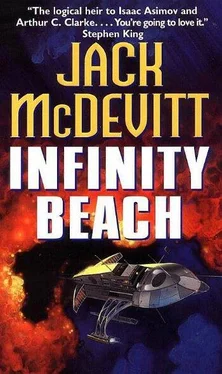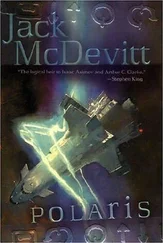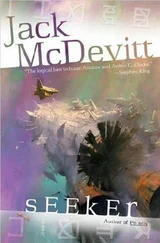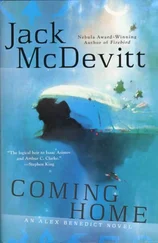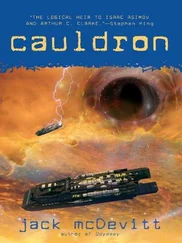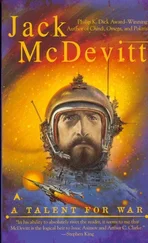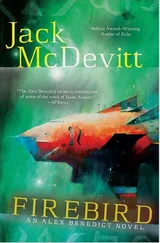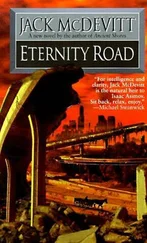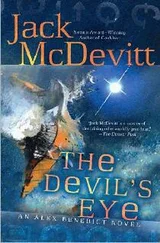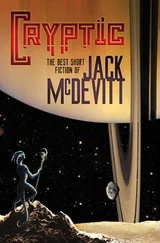Kim finished the story as the Seahawk dropped gradually to sea level and the mountains fell away. She was on the wrong side of the train to see it, but she knew that the skyhook was now visible.
There were always a few gasps from travelers who were looking at it for the first time. Skyhooks were, if not the most incredible of human engineering marvels, then certainly the most spectacular. Five of the nine worlds had them, and one was under construction on Tigris. Greenway’s skyhook, which was connected to Terminal City, was now about twelve kilometers away. Its enormous bulk rose out of the downtown area and soared into the clouds.
People were out of their seats, crowding to the right side of the car. Kim caught a glimpse of it, watched the sunlight strike its weathered sides. It always made her proud in some indefinable way.
Minutes later the train pulled into the terminal building and stopped. Passengers filed out into a vast agglomeration of shops and concourses, waiting areas and restaurants. Kim took a minute to locate herself, and then moved off at a leisurely pace toward the lift. There were people distributing religious literature, others soliciting signatures for political and social campaigns. Some wanted the board chairman of one of the train lines removed, others hoped to get support for a drive demanding research on increasing longevity.
Kim had some spare time, so she stopped on the main promenade for a glass of fruit juice. It occurred to her she’d put herself in Sheyel’s position: unless she was careful, Benton Tripley was going to conclude she was a lunatic.
The lift went up every other hour. The vehicle was divided into a lounge area, a VR facility, a souvenir shop specializing in Sky Harbor mugs and T-shirts, a coffee shop, and the Four Moons, a private club where members could relax around a leather-lined bar, shoot billiards, take over a VR booth, or nap.
The coffee shop was Nik’s. It was overpriced and the sandwiches tasted like plastic, but the coffee was good. The walls were covered with autographed pictures of celebrities who had passed through. Once on board, Kim headed directly for Nik’s and found a corner table.
The lift’s capacity was listed at 120 people. On this day it was carrying half that number. Kim ordered coffee and cantaloupe, looked out her window at the vast interior of the mall, and heard the announcement that they would be departing in a moment. The gates closed with a click.
The floor trembled and unseen engines engaged. The concourse, with its crowds and brightly decorated shops, began to fall away. Then Kim was passing through a tangle of struts and cables.
It was all she’d be able to see for about ten minutes. The lift would rise on the inside of the central support until it cleared the lower atmosphere. Then, when it was beyond potential wear and tear from weather conditions, it would emerge into the sunlight.
Several of her fellow travelers were VIPs also headed for the Star Queen . She finished her snack, leaving most of the cantaloupe, and wandered through Nik’s, saying hello, renewing acquaintances. McWilliam was there from Extron Industries, and Larry Dixon from the National Philanthropic Society, and Jazz White, the counterball player who was featured in the Star Queen’s promotional campaign.
The lift came out of its protective sheath and the coffee shop filled with sunlight.
She strolled into the lounge and found a cushioned bench. Some of the passengers were buying souvenirs, and most of the kids were in the VR rec center. Others stood near the windows looking out at the view.
Like the “windows” on the Hunter , these were really screens, which displayed views from external imagers. Transparent panels were a hazard, the weakest point in an airtight environment, so they had long since been phased out. But only a close examination could reveal the difference.
Matt had wrangled the invitation to the Star Queen ceremonies by pointing out that the designer of her engines had been Max Esterly, onetime Institute director, and that an Institute presence on the day the great liner was converted into a hotel was only appropriate. In fact, a plaque of Esterly had been mounted in the vessel’s main lounge. Matt’s real purpose, of course, was to remind the assorted decision-makers of the joys of technology, and that nothing worthwhile came free. It was Kim’s job to make them believers.
He’d given her a set of points to be driven home: If society does not move forward, it will decline. It is declining. We need to make some changes in the way we do things. The primary force in modern scientific research is the Institute. That was probably something of an exaggeration, but they said it at every opportunity so it had acquired the ring of truth.
She didn’t entirely agree with Matt’s approach. The belief that society was in decline was a permanent characteristic of every era. People always believed they lived in a crumbling world. They themselves were of course okay, but everybody around them was headed downhill. It was a tired drumbeat and she didn’t think bringing it up during the launch of the Star Queen Hotel would help generate anything except boredom.
Nevertheless she wondered whether something really was wrong. More than the end of scientific investigation. More than a society that sought its own pleasures to the exclusion of everything else. Some doomsayers were suggesting that the human race had simply grown old, exhausted itself in some metaphysical way. That it needed a challenge. Perhaps it needed to find others like itself, among the stars, with whom it could cooperate and compete. And trade war stories. That as things were, the species was just sitting on the back porch, waiting for God.
Much of the pessimism seemed to be coming from Earth, where it was almost the end of the third millennium, standard calendar. Historically such times had always generated cries that midnight had come for the race.
Whatever the truth might be, Kim thought that cutting the ribbon on the Star Queen Hotel was hardly an appropriate moment to throw a dead cat up the aisle.
Although the advent of artificial gravity had obviated the need for wheel-shaped space stations, the traditional configuration had remained in use everywhere except for the newest unit going up at Tigris. At one time there’d appeared to be a possibility for antigravity as well, but that breakthrough had proved elusive and was now thought to be impossible. Too bad: it was just the sort of goal the Institute needed to enlist the enthusiasm of the Star Queen crowd.
She was looking down on cloud banks and the curve of the world as the lift began to slow. People wandered about, collecting bags, making last-minute purchases, getting jackets onto their kids. It was a persistent belief among parents that Sky Harbor was drafty. The engines whined, the lift stopped, and the doors opened. Passengers filed out into the lobby of the Starview Hotel. Most inserted their cards into the registration dexes. Kim picked up the package she’d sent ahead, went to her room, showered, and worked on her remarks for the dedication. Through her window she could see Sky Harbor’s tail, the enormous counterweight to the lift, snaking out toward Lark, the innennost moon.
First up on her schedule was the award for Benton Tripley.
She had just time for a quick nap. Then she dressed and checked herself in the mirror. Satisfied that she looked pretty good, she took the elevator down to C deck, where most of the corporate suites were located.
It was a luxurious section, well away from the tourist and operational areas, featuring dark-stained paneling, potted plants, and thick carpets. The walls were hung with landscapes. Soft music whispered out of unseen speakers. The lighting was restrained, lending an aspect of quiet significance to the digitals marking the individual offices.
Читать дальше
